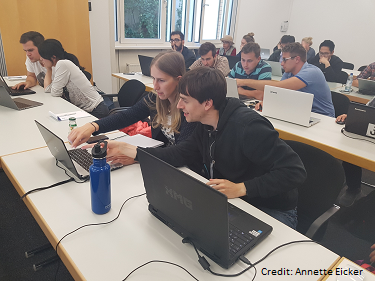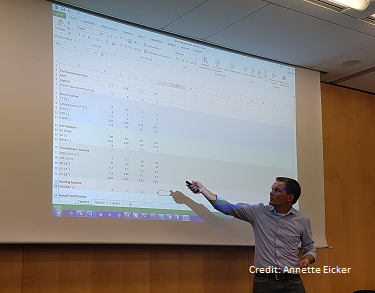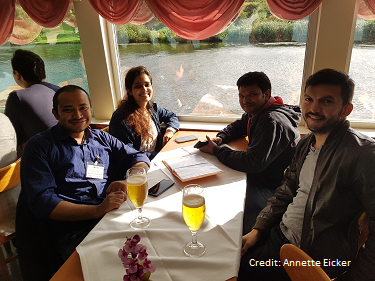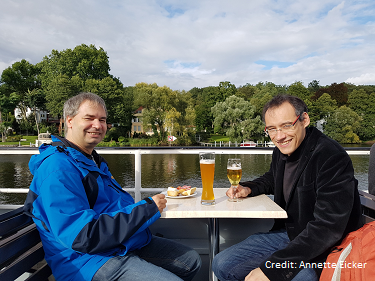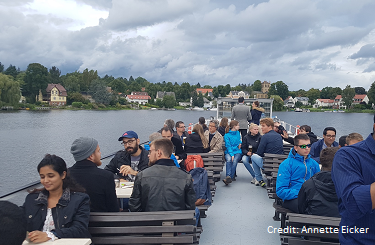The EGSIEM Autumn School on Satellite Gravimetry Applications took place in Potsdam, Germany from September 11 – 15 at GFZ, the German Research Centre for Geosciences. Around 45 participants from 16 different countries (plus 12 lecturers) enjoyed a very interesting week in Potsdam. In various lectures and practical (computer) exercises they learned how to handle the GRACE and future GRACE-FO data and how to use the information for various geophysical applications.
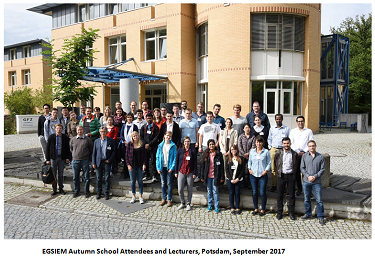
Photo Credit: GFZ
The Autumn School started on Monday afternoon with an introduction to GRACE and GPS given by Adrian Jäggi and Ulrich Meyer, before we all had the chance to get to know each other a little better during the ice breaker event at the GFZ cafeteria (thanks to the local organizing team for the fantastic catering throughout the week!). On Tuesday, Torsten Mayer-Gürr started by explaining the secrets behind gravity field modeling in terms of spherical harmonic basis functions, before offering all participants some hands-on experience in deriving gravity maps from GRACE datasets. The rest of the day was then dedicated to hydrological applications with a lecture plus practical on hydrological modeling given by Andreas Güntner and an evening talk on (hydrological) data assimilation by Annette Eicker. On Wednesday, the applications moved towards the cryosphere and the effects of the last ice age. Martin Horwath started with a lecture on ice sheet signals and in the following practical everyone had the chance to compute their own GRACE-derived time series in polar regions, and to study the melting of ice sheets and glaciers. In the afternoon, Holger Steffen provided a comprehensive overview on the process of glacial isostatic adjustment and how it can be observed, before Tonie van Dam concluded the day with her evening lecture on GNSS loading. In the Thursday morning block, Hendrik Zwenzner gave an introduction to remote sensing and after lunch Frank Flechtner’s talk on the status of the GRACE-FO mission offered a fascinating insight into the preparation steps and tests that are necessary before the two satellites will (hopefully) be ready for launch next spring. In the afternoon, a boat cruise on the surrounding lakes presented one of the highlights of the week. With (at least some) nice, sunny weather and accompanied by some snacks and drinks we enjoyed the scenery and the historic sights around Potsdam. On Friday, Matthias Weigelt first presented some key results of the EGSIEM project, before a practical by Stéphane Bourgogne, introducing the EGSIEM plotter as a very handy tool for evaluating GRACE results, concluded the Autumn School. Thanks a lot to all the organizers and especially to the students for their active participation in the event!!
We will shortly publish all the presentations given at the school, so please do check back soon!
